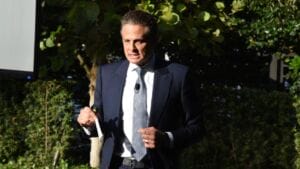Retirement readiness isn’t a topic many would consider fun to talk about. However, SmartAsset, a financial company based in New York, used data to show what cities nationally has the best 401(k) plans.
“We want people to think about these topics,” said AJ Smith, vice president of content for SmartAsset, “While not always fun, they have a big impact on people.”
SmartAsset specialized in free tools to analyze data with financial modeling that can provide actionable advice. In the study 2014 U.S. Department of Labor form 5500 data was analyzed under three requirements: employer contribution percentage, investment performance and administrative fees.
A 401(k) is a retirement account that is offered by employers that will involve employee contribution and in some cases employer contribution, Smith said. The three topics used in the study are important to the ability of the 401(k) to be prepared for retirement.
In Arizona, most companies were rated below 670 cities nationally for the three categories. However, Scottsdale took the No. 1 title in Arizona with its high employer contribution percentage. This means the total investments from employers were the highest when compared to the total investment in the 401(k).
Rank City Employer Contribution Percentage Investment Performance Administrative Fees Best 401(k) Plans Index:
1. Scottsdale
2. Green Valley
3. Youngtown
4. Phoenix
5. Tucson
6. Sun City West
7. Tempe
8. Sahuarita
9. Sun City
10. Flagstaff
Eric Sholberg, president of 401(k) Advisors of Arizona said it’s generally associated with the types of companies that exist in Scottsdale. Namely, more competitive industries, such as startups, exist in Scottsdale, which means they must offer better benefits.
“For example, if you have a white collar company, and a blue collar company, which would offer better benefits?” Sholberg asked. Although Scottsdale wasn’t the highest on the list for employer contribution percentage, it ultimately took the No. 1 spot in Arizona by having good investment performance and low administration fees.
Investment performance, is a good thing to look at when determining a 401(k), Smith said. Investment performance breaks down to how well the 401(k) is doing, and if the employee reaches their goals. Scottsdale was at 6.1 percent, while cities like Green Valley, AZ ranked at 11.9 percent.
Performance is an indicator as to how well the 401(k) is doing within the market. 401(k)’s can be as conservative or risky as the plan allows.
To calculate this, Smith and SmartAsset took the yearly earnings as a percent of the average total asset in the account. Performance is based largely on how much the 401(k) can grow to reach the retirement goal.
Employer contribution, investment performance and administrative fees are important tools to look at within a 401(k), Sholberg said. However, geographic data does not guarantee a good 401(k), the company does.
“It’s like the market, and my 401(k) is very market driven,” Robert Stephenson, current 401(k) owner, said, “If you watch the market and the market goes up a bit, so will the 401(k).”
Administrative fees are low in Arizona, ranking at less than a 0.4 percent, according to the study. 401(k)’s have fees to manage and run the portfolios that are generally low cost. Some cities have
as little as 0.0 percent, meaning the fees is negligible when compared to total amount in the account.
“What makes a better 401(k), in our eyes, is that the company understands the power of human capital,” Sholberg said. Human capital can be judged in many ways, however, Sholberg believes if a company invests in its employees, than it general obtains higher productivity levels.
To Sholberg, employee success is among the top three categories to measure a good 401(k). “Most experts say that to have the same lifestyle in retirement as a person does currently you need to be butting away at least 15 percent of your income,” Sholberg said.
Robert Stephenson, forensic scientist at the Arizona Department of Safety, has been saving since he started. In Phoenix, Stephenson has access to two different plans, one a 401(k). Currently, he puts away about 25 percent of his paycheck toward retirement, as he is seven years off from retirement.
“People are living longer and longer and you need to have a retirement plan in place so you are not impoverished when no longer working,” Stephenson said.
401(k) is an approach to retirement on a basis of the market, depending on how risky or conservative an employee would like to be. “If a person is a perspective employee looking at a 410(k) plan, low expenses, good monitoring of the funds and employer generosity would be the things to look at,” Sholberg said.



